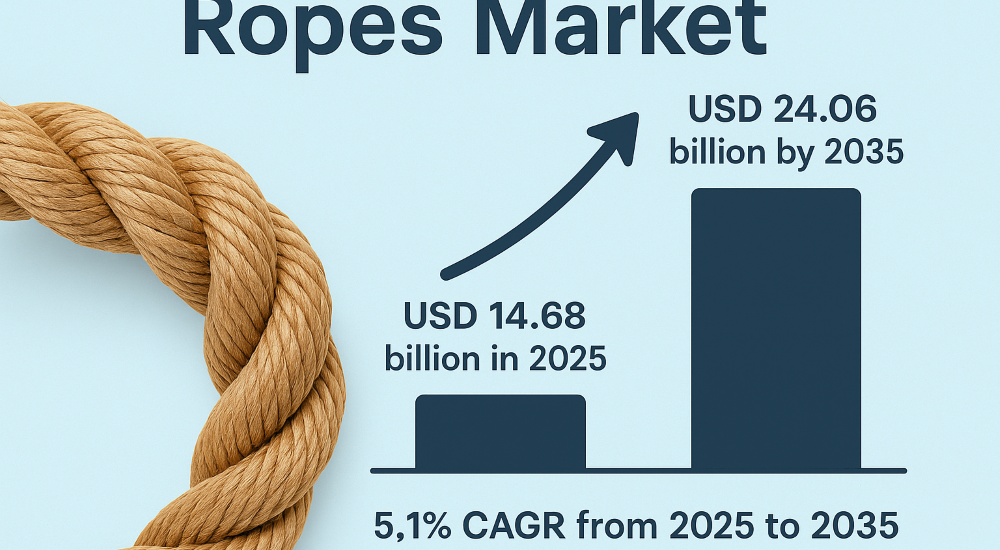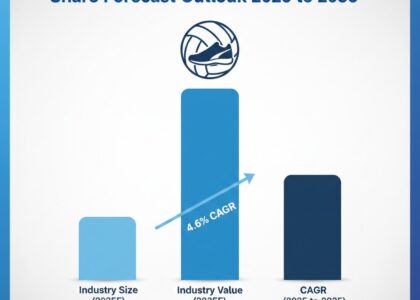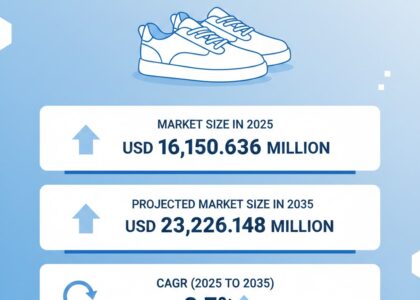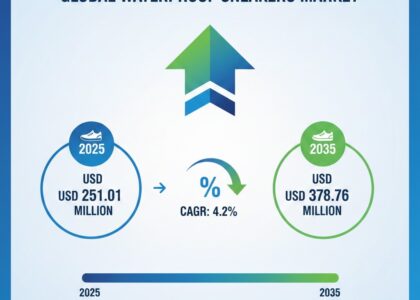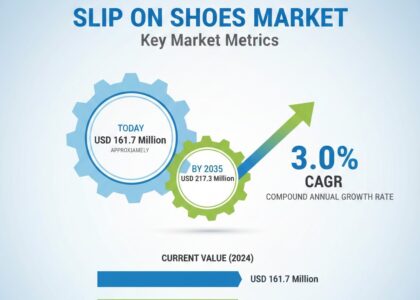In an age marked by sustainability imperatives and material innovation, it’s easy to overlook the quiet but critical role of ropes—an industrial mainstay tracing its lineage back thousands of years. However, this age-old product is poised for a modern leap. According to recent projections, the global ropes market is set to grow from USD 14.68 billion in 2025 to USD 24.06 billion by 2035, clocking a compound annual growth rate (CAGR) of 5.1%.
What sounds like a gradual climb is, in fact, a major transformation. Beneath the surface of this billion-dollar trajectory lies a story of shifting material preferences, evolving end-use industries, and technological convergence.
Unlock exclusive insights – Request your sample report! https://www.futuremarketinsights.com/reports/sample/rep-gb-17935
A Quiet Revolution in Fibers and Function
The fundamental utility of ropes remains unchanged—they are used to pull, secure, suspend, or lift. But how, where, and what they’re made of has dramatically changed. Traditional natural fiber ropes are being swiftly replaced by synthetic alternatives like polyester, nylon, polypropylene, and UHMWPE (ultra-high molecular weight polyethylene). These advanced materials offer better durability, tensile strength, and resistance to abrasion and chemicals.
Market Momentum: What’s Powering the Growth?
Several factors are influencing the ropes market’s accelerating growth. Here are some of the most impactful:
- Adoption in Sports, Climbing, and Adventure Tourism: The global boom in outdoor and extreme sports has created a strong niche demand for highly specialized ropes. From climbing expeditions in the Alps to recreational ziplining and paragliding across Southeast Asia, the demand for high-performance, safety-rated ropes has never been higher. With the global adventure tourism market itself growing at over 15% CAGR, it is becoming a lucrative vertical for rope manufacturers.
- Automation and Robotics in Manufacturing: Modern manufacturing and warehousing are turning to automation and robotics, where ropes—especially in hoisting, pulley, and tethering systems—remain integral components. In robotics, braided and tensile ropes are used in precise applications such as robotic tendons and actuator components. The integration of synthetic ropes with smart tension control systems is also pushing demand for engineered rope solutions.
- Defense and Aerospace Applications: The defense sector is increasingly deploying ropes in aerial cargo systems, parachutes, and maritime towing. Similarly, in aerospace, the need for ultra-lightweight, high-strength fibers is driving research into advanced rope systems that can perform in high-stress and high-altitude environments.
Discover new opportunities and gain transformative insights with our Consumer Services Industry Reports! https://www.futuremarketinsights.com/industry-analysis/consumer-services
Regional Growth Dynamics
From industrial usage in Chinese ports to climbing ropes manufactured in South Korea and textile innovations in India, the Asia-Pacific region is projected to dominate the ropes market through 2035. Rapid urbanization, maritime trade growth, and a growing consumer middle class contribute to both industrial and recreational demand.
In contrast, North America and Europe are concentrating on technology-driven growth and sustainable production methods. The U.S., Germany, and the Netherlands are major exporters of synthetic ropes, particularly for marine, defense, and energy sectors.
Meanwhile, Latin America and Africa are emerging as high-potential markets due to expanding mining, agriculture, and transport infrastructure sectors—all reliant on heavy-duty ropes.
Opportunities and Knots to Untangle
The path to 2035 isn’t without friction. The industry must tackle:
- Raw Material Pricing Volatility: Most synthetic ropes derive from petrochemical inputs, linking costs to oil prices and supply chain fluctuations.
- Counterfeit and Substandard Ropes: Particularly in unregulated markets, the influx of non-certified products is creating safety concerns.
- Recycling and End-of-Life Management: As synthetic ropes proliferate, end-of-life disposal remains an environmental challenge. Manufacturers are under pressure to offer take-back schemes or recyclable product lines.
Key Players
- Bridon-Bekaert
- TEUFELBERGER
- WireCo WorldGroup, Inc.
- Yale Cordage
- Marlow Ropes
- MAGENTO, INC. (English Braids Ltd.)
- Cortland Limited
- Southern Ropes
- van Beelen Group BV
- Dynamic Ropes
Get Full Access of this Report: https://www.futuremarketinsights.com/reports/ropes-market
Segmentation
By Product:
The segmentation is into Synthetic, Steel Wire, Cotton, and Others.
By End-Users:
The segmentation is into Industrial, Commercial, and Residential end-users.
By Region:
The segmentation is into North America, Latin America, Western Europe, Eastern Europe, South Asia and Pacific, East Asia, and Middle East and Africa.
About Future Market Insights (FMI)
Future Market Insights, Inc. (ESOMAR certified, recipient of the Stevie Award, and a member of the Greater New York Chamber of Commerce) offers profound insights into the driving factors that are boosting demand in the market. FMI stands as the leading global provider of market intelligence, advisory services, consulting, and events for the Packaging, Food and Beverage, Consumer Technology, Healthcare, Industrial, and Chemicals markets. With a vast team of over 400 analysts worldwide, FMI provides global, regional, and local expertise on diverse domains and industry trends across more than 110 countries.
Contact Us:
Future Market Insights Inc.
Christiana Corporate, 200 Continental Drive,
Suite 401, Newark, Delaware – 19713, USA
T: +1-347-918-3531
For Sales Enquiries: sales@futuremarketinsights.com
Website: https://www.futuremarketinsights.com
LinkedIn| Twitter| Blogs | YouTube


